Equestrian Surfaces – A Guide is a comprehensive handbook produced by the Swedish Equestrian Federation. It breaks down everything you need to know about horse arena footing. In a series of posts, we will cover each chapter. Next up, chapter 2: Training for Soundness and Performance.
TRAINING FOR SOUNDNESS AND PERFORMANCE
Soundness and performance are often cited as the motivation for constructing, maintaining and using a riding surface. In this context it is very important to be aware that the single most important factor for both soundness and performance is how the horse is trained and managed. Soundness and performance are the main focus in most discussions of riding surfaces. Lameness and back pain are the most common problems requiring veterinary care and leading to loss of use in equestrian sport.
Whether a horse is sound of course depends on an intricate combination of internal (often inborn) factors such as breeding, conformation, age, training history and previous injury plus external factors such as training and surface use. When it comes to soundness, external risk factors are much easier to influence than internal risk factors.
In common with humans and other animals, horses benefit from exercise and natural movement. Lack of work can be a bigger health risk than exercise and training, but training can also increase the risk of injury. If the horse is expected to perform without an adequate work up or to do repetitive work over longtime periods, then habitual movements can have degenerative effects just as they do in human athletes and in the workplace.
Scientific research on race and sport horse orthopaedic injuries has found that the risk of injury differs between yards/riders/trainers. Studies have also shown that training and surface use interact to influence injury risk.
We want to begin this guide with an overview of training principles and their association with soundness and performance. We have already mentioned some essential training principles that are important to keep in mind in view of performance and soundness. They areas relevant for a horse as for a human who is actively engaged in a sport or physical work.“The most important principle in training is that the work must be increased gradually.” This is a statement from Professor Gerhard Forsell, the Swedish team vet at the 1912 Olympics in Stockholm. He was later regarded as a veterinary legend, in his 1927 book “About the Horse, Its Anatomical Conformation, Management and Diseases”, which was produced as a handbook for a Federation rider badge.
How the quality of riding in itself influences equine soundness is a fairly new area of research. But a study of riding school horses by the surface research group at SLU showed that riding schools with a low incidence of orthopaedic injury more often had highly trained riding teachers and experienced riding school managers. Four important principles to follow in planning a horse’s work:
- Gradual increase of training and fitness.
2. Variation in the type of work.
3. Skill-specific training.
4. Individual adjustments.
Description of a training session (or plan) should include definitions of:
– Type of activity
– Duration (time and/or distance)
– Intensity (level of exertion) equestrian surface background 1920 equestrian surface background.
The soundness and performance of a horse is influenced by complicated associations of many factors, where riding surface and training both play an important part.
INTERNAL FACTORS (physical and mental)
- Respiration and heart
- Muscle Supportive tissues
- Genetics
- Character
EXTERNAL FACTORS
- Physical training
- Health and veterinary care
- Riding surfaces
- Mental training
- Feeding
- Breeding
- Management
- Rearing
FUNCTION
- Biomechanics
- Endurance
- Speed
- Strength
- Rideability
- Coordination
FACTORS THAT INFLUENCE EQUINE SOUNDNESS AND PERFORMANCE
BASIC PRINCIPLES OF TRAINING
Gradual increase of training and fitness. One obvious principle for most people who have had any experience of physical training is that muscle adapts and is “rebuilt” in response to training, getting larger and stronger depending on the type of exercise. This requires a gradual progression over time, or the muscle risks being overloaded and injured. Building fitness also requires a gradual process. Fitness is the body’s capacity to use oxygen, involving the lungs, heart, blood and muscle, which can all be trained.
It is important to understand that the musculoskeletal system also includes bone, cartilage, tendons and ligaments that adapt to training and work. Bone increases in density and strength, cartilage increases in thickness and fluidity, and tendons and ligaments benefit from improved coordination and proprioception. Bone, cartilage and tendons/ligaments take much longer than the lungs or muscles, to adapt to new activity, or an increase in intensity/volume, which if ignored can lead to an increase in injury risk.
A key factor in training for both soundness and performance is therefore to increase the workload gradually with respect to type, volume, intensity and recovery. As in all sports, it is especially important that the young or previously untrained individual is allowed to build physical strength through well planned basic training, before making more specific demands, for example, Jumping or Dressage.
Variation Continuity
The same principle holds for rehabilitation after an injury. Variation Continuity is an important aspect of training if it is going to have any lasting effect. One or two sessions at the gym makes little difference for a person, or can even increase injury risk. The same goes for horses; without regular repetition any training effect or improvement in fitness will be minimal.
At the same time it is important to include variation, based on training activity, volume and intensity plus rest and recovery. The variation is aimed at increasing the total training effect and decreasing the injury risk, both long and short term. If the horse’s daily training is carried out at low intensity, injury risk will increase on occasions when the horse is subjected to higher loads as fatigue is a known risk factor for injury.
Muscles play a role in absorbing the work load, and when the horse tires the load on tendons, ligaments and cartilage increases. It is therefore important to include fitness training to improve the horse’s physical endurance, but again there should be a gradual increase in demands. Attempts to go “fast forward” in training can result in fatigue and subsequent injury.
Continuity of training is an important factor in training if it is going to have the desired effect. Lack of continuity can in crease injury risk. Paddock time in a small area has no physical training effect. One method to increase the training effect in a controlled manner is interval training. This means that the horse performs repeated bouts of work separated by rest intervals that allow partial recovery. The intensity and length of the exercise bouts will be tailored to what the horse is being trained for.
Training variation promotes general strength and endurance, which in turn can be expected to promote long-term soundness. Training variation helps balance the need for “rebuilding” or adaptation, which is an important part of the effect of training. Based on experience, training variation also helps promote mental motivation in both the horse and human athlete.
Comparative Training
Human sports research has shown that balance and coordination are important factors in injury prevention. A horse who is only ridden in an outdoor or indoor arena will have very limited chances to develop balance and coordination, compared to a horse that is also hacked out on different types of terrain. The quality of riding can also be expected to influence the extent to which the horse is able to move in balance.
Once the basic training and conditioning is done the horse needs to adapt gradually to the type and amount of work that will be expected in competition or other full work. This requires specific training of technical skills, such as motor and mental control, through Jumping exercises or Dressage movements, depending on the main discipline of the horse. Specific training may also involve communication with the rider or developing specific strength, speed or endurance.
Any changes in training or work load must happen gradually, also when changing riders or discipline. A Dressage or Jumping horse being prepared for Eventing requires adequate time to be prepared for the new discipline. An advantage of specific training is that it makes it easier to balance the volume and intensity of work so that you get a training effect with less risk of overloading.
One obvious human example of specific training is strength training in a gym. If we can develop exercises for our horses on similar lines, this would help to make training more efficient and safer.
Individual Training
There is no universal recipe for successful training that works for all horses. Horses are individuals with different temperaments, conformation and movement, which must be taken into account in all training. Individual training also means that you monitor how each horse responds, making modifications if the effects are negative or in other ways unwanted. If the horse shows signs of fatigue then the trainer must make short-term changes and, if these are unsuccessful, then long-term changes are required.
Individual training is, to a major extent, a question of learning to“read” each horse. Dressage horses need very specific training to perform advanced moments. At the same time it is important not to forget other aspects of training that strengthen the horse’s fitness and supportive tissues.
SURFACE, TRAINING, AND INJURY RISK
When discussing surfaces in relation to performance and reducing injury risk it is important to remember that the way you use a surface is as important as which surface you use and its properties. Training variation means riding on a variety of surfaces! This includes using more than-one arena, but especially riding on varied natural terrain, (quiet) roads and riding paths. The body of the horse adapts to the surface used. If the horse is constantly ridden on the same surface the musculoskeletal system is not prepared for any variations, thereby increasing the risk of injury. Surfaces can also be used as a part of a training regimen aimed at promoting soundness.British riders have a tradition of roadwork,with gradually increased distances of walk and trot on roads/tarmac. There is one school of thought that road work strengthens the musculoskeletal system, while based on other traditional experience it is part of a gradual conditioning program to develop a better conditioned horse that will have less risk of fatigue and thus less risk of injury.Surface properties can affect both performance and the risk of injury. One dilemma is that properties that aid “better performance”also increase the load on the horse’s musculoskeletal system and can increase injury risk.One example is a surface which is very firm/hard and/or excessively “grippy”, making it easier for the rider to ride fast and turn quickly. Higher speed in itself also increases the load on the horse’s leg.If the horse competes on a surface with certain properties, the training preparation should include exercising on the same type of surface to allow for adaptation. If you are going to compete on grass, it is preferable for the horse to also train on grass. Prior training on surfaces that the horse will use at competition should allow the horse to experience the surface properties at a reduced work intensity, rather than having to do this while also being asked to perform to its optimum level during competition. Adaptation has several aspects, one of which is that he horse’s pattern of movement is changed and probably adjusted to different surfaces. An example is the observation that horses not used to working on fiber sand tend to trip in the beginning until they get used to it. Adaptation is also a question of rebuilding the musculoskeletal system in line with the demands. This can take weeks or even months.By far the most important factor for performance and soundness is how the horse is trained!
WHAT DOES RESEARCH SAY?
Professor Agneta Egenvall at SLU has led a field study registering the training and health of Jumping horses over a period of about six months. Results showed an association between the number of days lost to training due to injury, training factors and surface use.
You can read the next chapter on The Interaction Between the Hoof and the Surface here or read the entire Guide here. And, if you have any questions about your arena footing needs, please contact us.
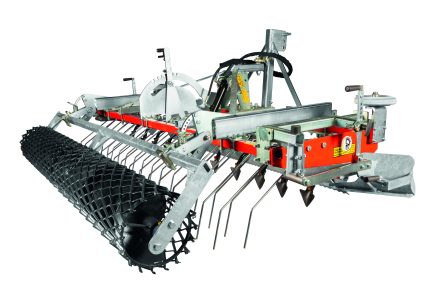
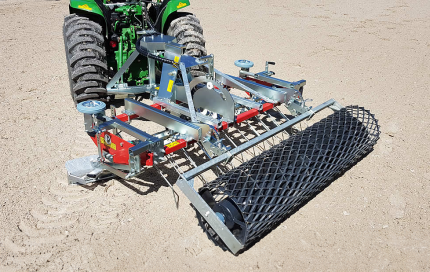
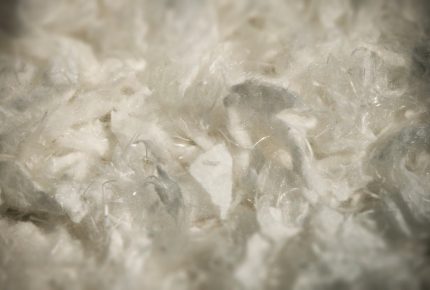
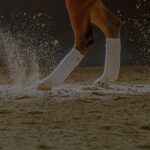 Geotextile Arena Footing
Geotextile Arena Footing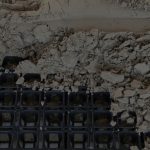 Ground Mats and Grids
Ground Mats and Grids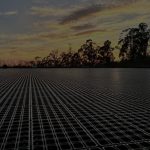 Subsurface Irrigation
Subsurface Irrigation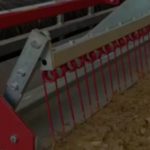 Arena Drags & Groomers
Arena Drags & Groomers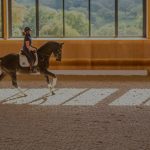 Mirrors and Kickwall
Mirrors and Kickwall Horse Wellness
Horse Wellness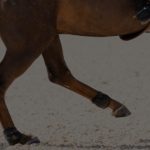 Dust Control
Dust Control